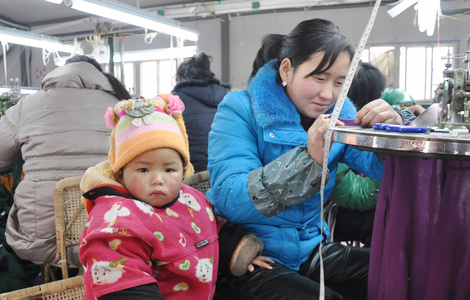 |
|
|
|
|||||||||
Editor's note: There's no better time to raise questions than the NPC/CPPCC sessions, which bring together China's top policymakers. China Daily asks experts from different countries what they wish they could ask the members and delegates about topical issues. Reporters Xin Dingding and Liu Lu gather the answers.
Danny Quah, professor of economics at London School of Economics and Political Science, would like to ask how China deals with the less rapid economic development of its western areas.
Less-developed areas of western China need more policy and capital support from the central government to boost their economic growth and narrow the gap with eastern regions.
But reviewing problems emerging from the past decade, economic planners and experts warned that the western regions should aim for higher-quality and more-efficient development.
Eastern and western China differ greatly in conditions such as rainfall, land form and resources, said Gao Guoli, deputy director of the institute on land development and local economy under the National Development and Reform Commission.
The east mostly consists of plains dotted with hills, but the west is generally mountainous, with deserts and glaciers.
Many foreigners who see high-rise buildings in China's eastern cities do not know that some villages in remote areas of western China are not even connected to a proper road or the power grid.
Gao said the central government turned its attention to the large-scale development of western China in 1999, and progress has been made in some areas. "But on the whole, the trend of the widening gap has not changed," he said.
In the past decade, the central government drafted favorable policies and allocated funds to support the western regions - six provinces, five autonomous regions, Chongqing municipality, and three ethnic autonomous prefectures. The area covers 6.85 million square kilometers, or 71 percent of China's land territory.
Some industries were encouraged to shift from the east to the west.
Yang Xianming, head of the School of Development Studies of Yunnan University and a member of the Chinese People's Political Consultative Conference National Committee, said this trend would benefit both the east and the west, as some energy-hungry industries are straining resources in eastern China.
"While the rich labor, mineral and land resources in central and western China are not made good use of, eastern China has to have energy and resources transported over a long distance," he said.
But during the shift, new problems have emerged.
Observers said that some regions opted for the same development path, causing repeated construction and wasting resources.
Some heavily polluting projects, especially chemical, photovoltaic and pharmaceutical enterprises, were also introduced to the west, causing pollution.
Regarding these new problems, the recently released 12th Five-Year Plan for western regions stressed the "quality and efficiency" of development.
NDRC Minister Zhang Ping urged western regions not to choose the same development path regardless of their own conditions.
He said at a news conference on Monday that local governments should "be realistic" and "find their own path" based on their comparable advantages.
Yunnan province, for example, is labeled as the "bridge" in Southwest China because it borders Myanmar, Laos and Vietnam. The central government has also granted favorable policies to support its trade with Southeast Asian countries.
The plan for the Chengdu-Chongqing Economic Zone was also approved last year, which is expected to be a regional economic hub in western China and a major modern industrial base for the entire country by 2015.
The western regions are also urged not to sacrifice the environment for economic growth.
Shen Peiping, Party chief of Puer, in Yunnan province, said that western regions should say no to polluting and low-level industries when industries move from east to west.
"After all, the purpose of economic development is to provide people with a high-end environment for living," he said.
Meanwhile, western provinces and regions want more financial support.
Li Yaping, a National People's Congress deputy from Sichuan province, told China Daily that he will submit a proposal suggesting the central government establish a special fund for the development of China's western regions.
"Compared to China's eastern regions, Sichuan remains poor in infrastructure and its economic structure is irrational," he said.
You may contact the writers at xindingding@chinadaily.com.cn and liulu@chinadaily.com.cn
Li Yu in Chengdu and Li Yingqing contributed to this story.
(China Daily 03/07/2012 page6)
Wu Ying, iPad, Jeremy Lin, Valentine's Day, Real Name, Whitney Houston, Syria,Iranian issue, Sanyan tourism, Giving birth in Hong Kong, Cadmium spill, housing policy

|

|

|

|

|

|